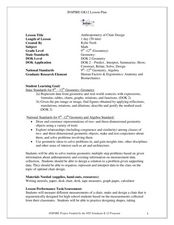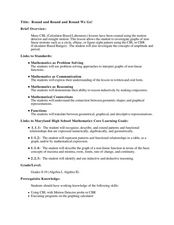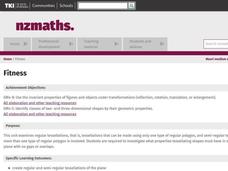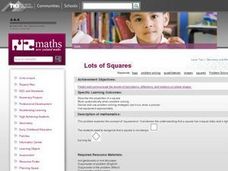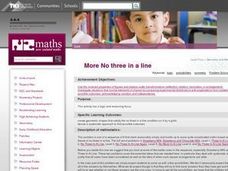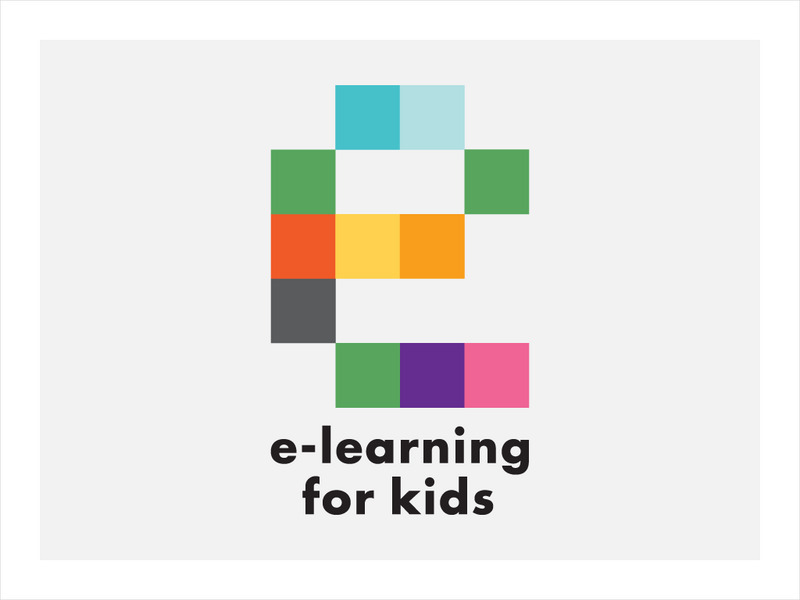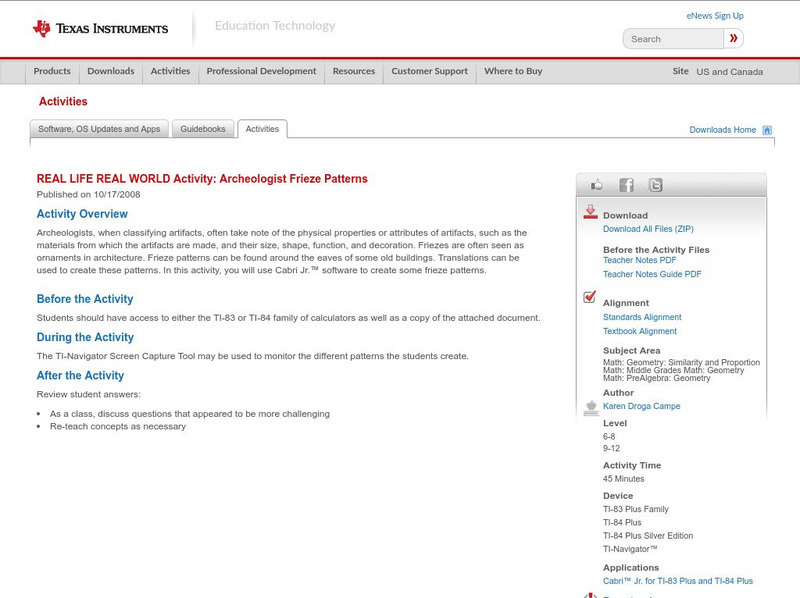Curated OER
Data Representation
Learners solve real life scenarios using math. In this geometry lesson, students collect, predict and interpret data. They measure a chair using different measurements and choose what would make the chair the best design.
Curated OER
Round and Round and Round We Go!
Students investigate motion using a CBL. In this algebra instructional activity, students collect and graph data on a coordinate plane. They define and identify amplitude and period of conic graphs.
Curated OER
Can Races
Students participate in an experiment dealing with kinetic energy. They predict which cans they believe will win the can race and why. They answer questions based on the experiment.
Curated OER
Understanding Daoism through study of the Daodejing
Students work in groups and study Daodejing. They describe how Monkey's behavior (from the Monkey Stories) is governed by the Yang and the Yin powers.
Curated OER
Area of Parallelograms
Seventh graders review the process of finding the area of a rectangle and complete a couple of examples as a class. They discuss what a parallelogram is and what the formula would be for finding its area. They listen to an explanation...
Curated OER
Fitness
Fourth graders determine how to design regular and semi-regular tessellations of the plane. They develop the ability to demonstrate why a tessellation covers the plane in this series of lessons.
Curated OER
Introduction to Plates, Axles, and Gears
Students are introduced to the function and design of the following Lego pieces: beams, bricks, plates, axles, tires, hubs and bushings. They then work with a partner to build something using only these pieces.
Curated OER
Lots of Squares
Learners work in pairs, to make a square on the geoboards with a rubber band (or draw one on the dot paper). It can be any size and in any location and share their answers with the class.
Curated OER
National Gallery of Art: Prinz Friedrich von Homburg: Ein Schauspeil, 3x
Learners explore the work of Frank Stella. In this art appreciation lesson, students look at images of the sculpture Prinz Friedrich von Homburg: Ein Schauspeil, 3x and discuss it as a work of art. This lesson includes two simple...
Curated OER
Linnaeus' Latin Lingo
Students use Latin and Greek words to figure out species names for whales.
Curated OER
Natural Wonders of China And Japan
Students identify some of the attributes of China and Japan and compare and contrast the way Chinese, Japanese, and American artists represent nature in art. The lesson is for upper-elementary classrooms.
Curated OER
Hanging Scrolls
Pupils explore prospective content for art, then select and use appropriate
subjects, symbols, and ideas to make art meaningful in this lesson plan suited for upper-elementary and middle level classrooms.
Curated OER
Draw A Coastline
Students identify, locate and draw at least ten different geographical features on a map. Using the map, they must make it to scale and include their own legend and compass rose. They share their map with the class and answer questions.
Curated OER
Color and Composition for the Creative Quilter
Students explore free-motion machine quilting through three exercises. They enhance patterns, make their own patterns and stitch a realistic quilted drawing. Students create a color wheel and develop a variety of methods that enable them...
Curated OER
Supreme Court Newspaper
Young scholars examine the purpose and responsibilities of the Supreme Court and its justices. In groups, they research a specific case and identify how the Supreme Court affects their lives. Using the information they find, they...
Curated OER
Strawberry Milk
Students work in groups or alone to solve the problem. They use a systematic approach to get all possible answers. They report back to the class with solutions. They may extend their studying using a crate with room for 9 bottles.
Curated OER
More No-Three-In-A-Line
Fourth graders read Mary's problem and make sure that they examine it.
After some discussion, let the class work on the problem in their groups.
They then take turns in putting a picture of their arrangement on the board.
Math Is Fun
Math Is Fun: Translation
Students learn about how to translate a shape. An activity, example, and definition are included.
Texas Instruments
Texas Instruments: Traveling Shapes Motion Geometry
In this activity, students describe how to move a shape from one place to another in a plane. They learn about translations, rotations, and line reflections. [Requires Adobe Reader.]
Khan Academy
Khan Academy: Translate Shapes
Given a figure and a definition of a translation, draw the image. Students receive immediate feedback and have the opportunity to try questions repeatedly, watch a video, or receive hints.
CommonLit
Common Lit: Orphans' Lonely Beginnings Reveal How Parents Shape a Child's Brain
A learning module that begins with "Orphans' Lonely Beginnings Reveal How Parents Shape a Child's Brain" by Jon Hamilton, accompanied by guided reading questions, assessment questions, and discussion questions. The text can be printed as...
E-learning for Kids
E Learning for Kids: Math: Living in the Mill: 2 D Shapes
Students can use this interactive site to practice various geometric concepts such as rotations, reflections, translations, tesselations and geometric patterns.
E-learning for Kids
E Learning for Kids: Math: Market Place: 2 D Space
At the Food Market there are a lot of shapes. Help Afia find and name the shapes.
Texas Instruments
Texas Instruments: Real Life Real World Activity: Archeologist Frieze Patterns
Archeologists, when classifying artifacts, often take note of the physical properties or attributes of artifacts, such as the materials from which the artifacts are made, and their size, shape, function, and decoration. Friezes are often...


